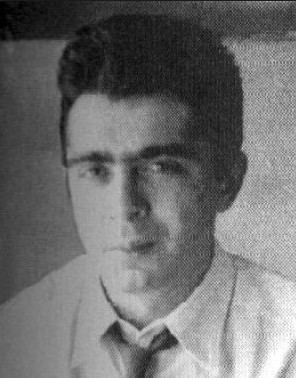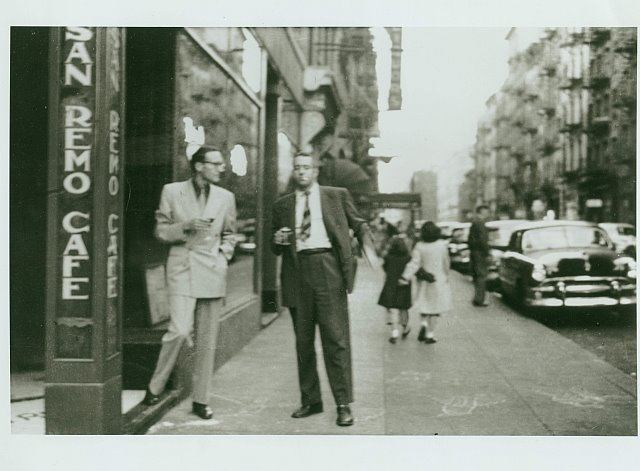Name Bill Cannastra Died 1950 | ||
 | ||
William "Bill" Cannastra (1922–1950) was a member of the early Beat Generation scene in New York. He was a "wild man" figure that the writers in the group found interesting, similar to their fascination with Neal Cassady. Characters based on Bill Cannastra were included in both the John Clellon Holmes novel Go (as "Agatson") and Jack Kerouac's Visions of Cody (as "Finistra"). He is also described in Allen Ginsberg's "Howl".
Contents
- Life
- Death
- John Clellon Holmes Go
- Allen Ginsbergs Howl
- Jack Kerouacs Visions of Cody
- In other literature
- References

Life
William Cannastra was one of two sons born to a wealthy, aristocratic mother and a machinist father who had emigrated from Italy. "The Cannastras lived on Schenectady's Pennsylvania Avenue, a tree-lined street in the shadows of the Mount Pleasant ballfields. Young Bill, who had the yearnings of a career in the art world, instead placated his parents by studying at Harvard Law School. In the summer of 1949, when he moved to New York City to further pursue his studies, Haverty went with him."
Bill Cannastra and Joan Haverty met at an artists' colony in Provincetown, Massachusetts when she was 19 years old. He was "vacationing as a scallop-boat fisherman", according to Haverty's memoir "Nobody's Wife" and biographical sketch in Women of the Beat Generation. It goes on to say, "She followed Bill to Manhattan at the end of the summer of 1949, and there she hung on to a precarious but happy existence, reveling in her seamstress job, window-peeping at night with Bill on the streets of New York ..."
According to Ellis Amburn: "Joan sometimes dressed in drag as a sailor and joined Cannastra in kinky games, peeping through windows."
The address of Cannastra's loft in Chelsea (now a parking lot) was 125 West 21st Street.
Death
Bill Cannastra died on October 12, 1950 in a drunken stunt, wherein he was apparently trying to climb out of a subway car window just as it was pulling away from the platform and was decapitated. He was 28 years old.
Allen Ginsberg refers to the subway stop where Cannastra died as Astor Place. Some other accounts have it as the Bleecker Street stop.
Cannastra was living with Joan Haverty at the time of his death. Shortly afterwards she met Jack Kerouac, who immediately proposed to her. Some accounts have it that it was the place where Cannastra had lived that Kerouac found a roll of Japanese rice paper which he then used to write On the Road, though it appears this may be in error as more recent scholarship describes the On the Road "scroll" as "telegraph paper".
John Clellon Holmes, Go
In Holmes' Go, Cannastra (alias Agatson) makes his entrance to a party:
Holmes discusses Cannastra in an interview in 1974:
Clellon's account of Bill Cannastra's death:
Allen Ginsberg's Howl
A number of lines in the poem "Howl" refer to Bill Cannastra:
who sang out of their windows in despair, fell out of the subway window, jumped in the filthy Passaic,
leaped on negroes, cried all over the street, danced on broken wineglasses barefoot smashed
phonograph records of nostalgic European 1930s German jazz finished the whisky and threw up
groaning into the bloody toilet, moans in their ears and the blast of colossal steamwhistles,
Ginsberg explains the music reference:
Jack Kerouac's Visions of Cody
In Jack Kerouac's Visions of Cody, the character "Bill Finistra" is based on Cannastra; "Finistra" is a poet who is friends with Jack Duluoz and travels with him from New York City to San Francisco in 1948 so they can visit a friend named "Cody Pomeroy" who is based on Neal Cassady. "Finistra" is an important supporting character throughout the novel.
